



You know it's a juvenile series book by....
Those Quaint Reviews and Previews Unique To Series Books
One of the hallmarks of children’s mystery series books is the sometimes-brief introduction by the author of the characters and their previous exploits in earlier volumes. Often this occurs in the first few pages and is part of the character description:
“The scrappy, humorous ex-marine had lived on Spindrift Island ever since he had rescued Rick from Manfred Wessel’s gang before the launching of the moon rocket…Scotty had been hired as an island guard, and he had helped Rick solve the rocket mystery and trap the Spindrift Island traitor…”
Rick Brant Mystery #2, The Lost City, page 2, referring to volume 1, The Rocket’s Shadow
Series written before 1930 are more likely to have this type of quaint narrative:
“While the boys are thus marooned by the storm in the shelter of the cliff it might be best to introduce them to new readers of this series.”
The Hardy Boys, Hunting for Hidden Gold, page 13
After a brief introduction of the characters, the author would summarize the previous volumes as briefly as possible but with usual inclusion of previous titles. From the Hardy Boys, Hunting for Hidden Gold:
“In the first volume of this series, “The Hardy Boys: The Tower Treasure,” Frank and Joe Hardy solved this first mystery, tracing down a mysterious theft of jewels and bonds from a mansion on the outskirts of Bayport after their father had been forced to admit himself checkmated.”
Since Hunting for Hidden Gold was #5 in the series, a paragraph was used to briefly describe volumes one, two, three and four. Unlike television series that recap prior episodes at the beginning of a new episode (“Previously, on LOST.”), this recap is seldom necessary to advance the current story. While the recaps can serve to introduce the characters for a reader who has never read any of the books, it was more often than not used as a marketing tool to encourage sales of the other volumes. Most series began with an initial release of three or four volumes at one time, referred by some as a breeder series. Bookstores would offer the initial volumes as a set. If sales warranted it, more volumes would be prepared. The first three Hardy Boys were published in 1927.
Along with recapping previous volumes at the beginning, most series books also preview the next volume at the end of each story:
“There were to be more exciting adventures in store for the Hardy boys, and what some of these were will be related in the next volume of this series, entitled “The Hardy Boys: Hunting for Hidden Gold,” a strenuous story of the West.”
The Hardy Boys, The Missing Chums, page 213
The older the series was written the sillier some of these recaps can be:
“Leaving Stella to nurse her resentment against the unpleasant Mrs. Renton, a few moments will be taken to tell new readers something about the Outdoor Girls and their activities up to the present time.
In the first volume of the series, entitled “The Outdoor Girls of Deepdale,” the girls embarked upon a camping and tramping trip which brought in its train many interesting and thrilling adventures.
There followed other good times at Wild Rose Lodge, at Cape Cod, and at Spring Hill Farm, a summer resort in the mountains. There had been a never-to-be-forgotten vacation at New Moon Ranch as the guests of Daniel Tower, the guardian and self-styled uncle of the Bronson Twins, Meg and Lota.”
The Outdoor Girls On a Canoe Trip, page 12-13
The Outdoors Girls were published between 1913 and 1933, covering more than 20 volumes. It is interesting to note that this series was unique in that at the end of the series the original characters were replaced with new characters:
“The four original Outdoor Girls, Betty Nelson, Mollie Billette, Grace Ford, and Amy Blackford had, one by one, deserted their beloved club in favor of matrimony.”
The Outdoor Girls on a Canoe Trip, page 12.
It should be noted that The Outdoor Girls series ended three volumes later. Apparently the new outdoor girls were not as interesting as the earlier outdoor girls. If a series covers several decades, like the Outdoor Girls, it can be rather tedious to try to recap every volume.
Not every series book will feature this amusing recap or even the ending preview. Most likely this feature was more common in books produced by the Stratemeyer Syndicate, famous if not infamous for their marketing techniques of their books. But this technique was not reserved to them only:
“Readers of the Sign of the Spiral will remember how these two friends and Gulliver followed clue of the ring’s pattern to capture an outlaw gang in a ghost town.
The spiral figured importantly in Tom Quest’s life a second time during an adventure among the headhunters of Ecuador, as related in The Telltale Scar.”
Tom Quest, Mystery of the Timber Giant, page 11
Author Fran (Lone Ranger) Striker was no Stratemeyer ghost writer, but still used this technique to not only market his books, but establish the credentials of the characters and their relationship. As related on another page of my web site, the Tom Quest series is one of my most favored series because of its more adult, realistic storylines. See accompanying article on “strange scenes in series books.” I highly recommend the Tom Quest series.
After many years of enjoying these books, and sometimes wading through these reviews, I found a most unique marketing technique I have ever seen. In the Trailer Series books written by Mildred Wirt in 1937 and 1938. In volume one, The Runaway Caravan, the author promotes other books she wrote not related to the Trailer Series:
“Barbara’s tower room was lined with a wealth of books. On a small center table she kept her favorite stories, The Twin Ring Mystery, The Clue at Crooked Lane, and the Hollow Wall Mystery, which she had read so many times she could almost repeat whole pages from memory.”
The Runaway Caravan, page 6.
I have never known an author to use one series to promote another series, much less one character to promote another series in such a blatant way. Can you imagine this scene:
“Before ending her exciting day, Nany Drew relaxed on the couch with her favorite book series, the Dana Girls.”
Finally, another form of promotion that rarely occurs in series books occured in the Ken Holt and Rick Brant series. In one Ken Holt book, the author refers to an invention of another series hero, Rick Brant. And in a Rick Brant book, “The Flying Stingaree“, the author John Blaine uses the resources of Ken Holt, a newspaperman, to identify a villain in the story, and in fact the author titles Chapter X: .“Ken Holt Comes Through." These two series were written by different authors, but they were obviously friends.
These previews and reviews add a fun element to series books that I enjoy, no matter what the motive of the author or their publisher.




























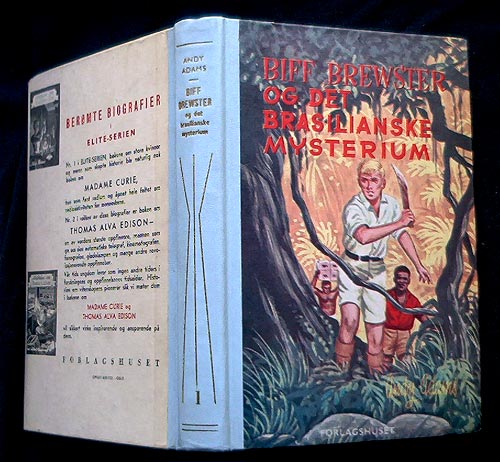

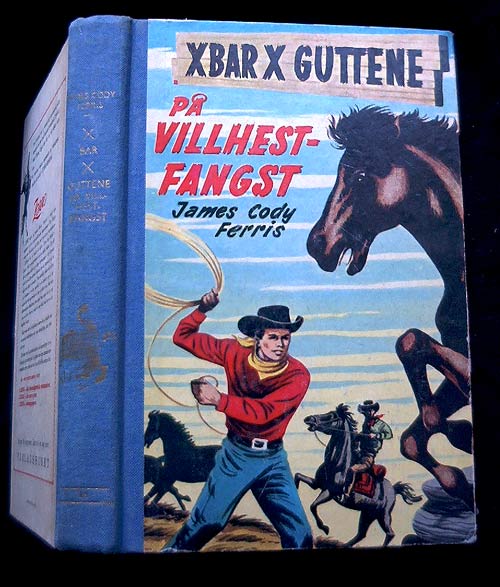


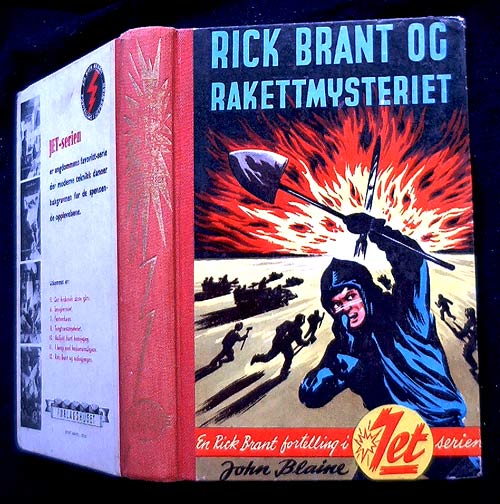
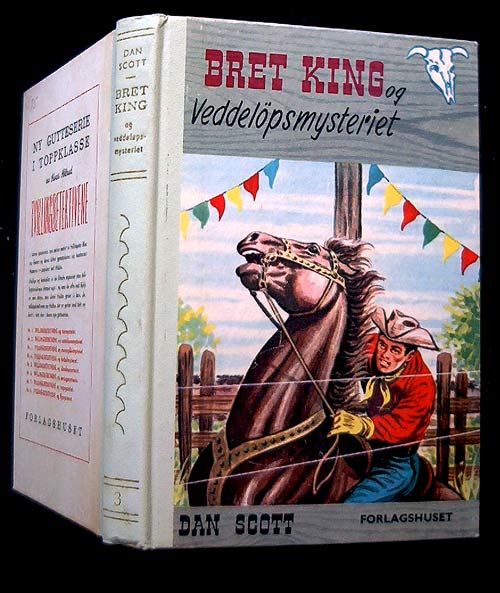

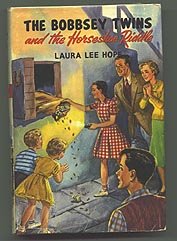
No comments:
Post a Comment